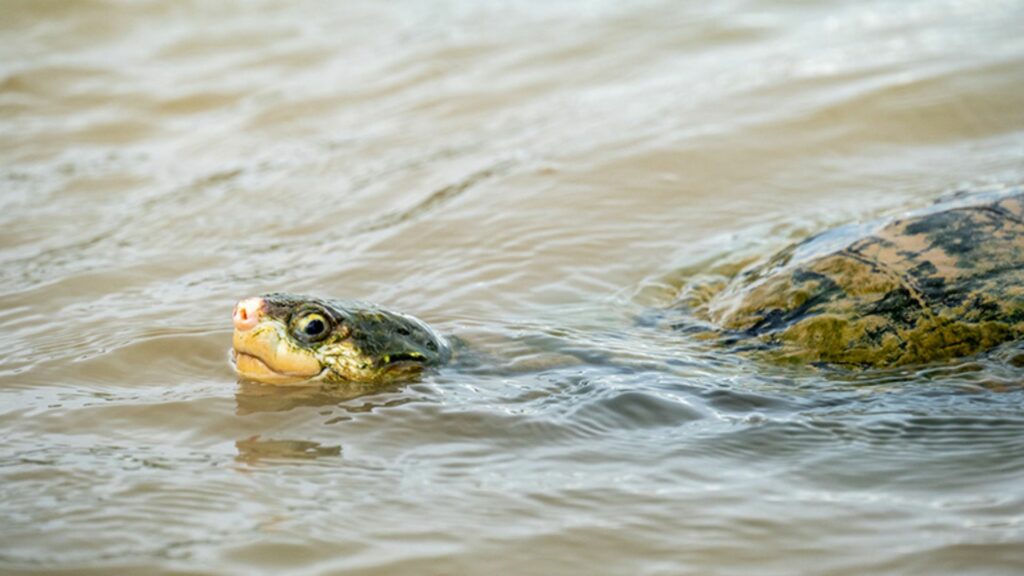Threatened species of river turtles are enjoying the new bypass at Rookwood Weir in Queensland, created to capture valuable water in the lower Fitzroy River in central Queensland and deliver secure and reliable water across the region without interrupting the daily transit of the local aquatic residents.
Ensuring the vulnerable Fitzroy River Turtle and the critically endangered White Throated Snapping Turtle can continue their natural movements is an important component of the National Water Grid funded Rookwood Weir project in Queensland.
National Water Grid Branch Head of Water Grid Infrastructure Investment, Mark Darrough, said turtles generally need to travel up and down river streams to be able to breed, seek shelter and find food.
“To ensure turtles can carry on with their day-to-day business, projects such as the Rookwood Weir, can construct a turtle passage, sometimes known as a turtle bypass,” Mark said.
“The passage has been designed to allow turtles the ability to make their way up and down the stream easily, there are little pools of water at each step to ensure turtles can have a rest before going further, and shaded parts to help mimic the turtles’ natural desire to seek shelter from the sun.”
Turtle experts believe that the turtles will learn to use the passage rather than trying to cross through the weir wall.
There are a number of approaches being used to minimise the impact of water infrastructure projects on native species, including construction of a similar structure called a fish passage.
“It’s all part of a nature positive approach that is helping us as a department to conserve, protect and sustainably manage Australia’s natural environment,” Mark said.
The project is jointly funded by the Australian Government, Queensland Government and Sunwater, with Australian Government funding provided through the National Water Grid Fund.

A White Throated Snapping Turtle – credit Sunwater.










